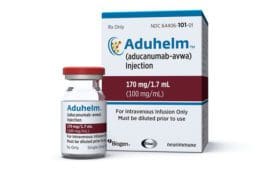
Distribution of potassium (K), which allows us to visualize the cell, manganese (Mn) and merged images for K (red) and Mn (green) for a cell expressing the mutation involved in the disease. Elemental maps were obtained by synchrotron X-ray fluorescence imaging on the ESRF ID16A beamline with a beam size of 50 nm. Credit: Asuncion Carmona / CENBG / CNRS
Using X-ray fluorescence at synchrotrons DESY and ESRF, researchers in the Centre d’Etudes Nucléaires de Bordeaux Gradignan (CNRS/Université de Bordeaux) have demonstrated the consequences of a mutation responsible for a hereditary parkinsonian syndrome: accumulated manganese in the cells appears to disturb protein transport. This work, carried out with colleagues at the University of Texas at Austin (USA), was published in the print issue of ACS Chemical Neuroscience on January 16, 2018.
Parkinsonian syndrome is a set of diseases with symptoms similar to Parkinson’s disease. Some are caused by high quantities of manganese, a metal essential to the body at trace levels. This is especially so for a hereditary form of the disease caused by a genetic mutation responsible for a toxic accumulation of manganese in cells.
The team of researchers has shown a key mechanism for the disease caused by this mutation. At the DESY synchrotron (Hamburg, Germany), they have been able to locate manganese inside individual cells, (1) using the fluorescent signature it produces under an X-ray beam. Manganese concentrates essentially in the Golgi apparatus, a cellular compartment which acts as a dispatch center for proteins. The proteins receive a label and are accordingly packaged within vesicles to other compartments, or to the outside of the cell. It is in these vesicles–barely 50 nm in diameter–that manganese accumulates, as the researchers have demonstrated by repeating their experiments in the ESRF synchrotron (The European synchrotron, Grenoble), with even higher sensitivity and spatial resolution. This is the only place in the world where the equipment’s spatial resolution and sensitivity were sufficient to detect the minute amounts of manganese in the vesicles.
The researchers think that this manganese accumulation disturbs protein export towards the outside of the cell, altering nerve cell function and leading to parkinsonian symptoms. This must still be confirmed by reproducing these experiments with neurons from animal models for this disease, which are being developed.
Filed Under: Neurological Disease




